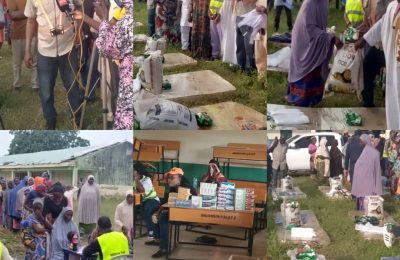COCOA: CSOs Raises Farmer’s concerns amidst high price records
RECORD PRICES, BUT MANY FARMERS STILL TRAPPED IN POVERTY IN THE COCOA SECTOR
The cocoa sector has experienced heightened volatility in recent years, driven by market volatility, environmental degradation, and human rights challenges. As cocoa prices soar to record highs, millions of smallholder farmers in Côte d’Ivoire, Ghana, and Nigeria, who produce most of the world’s cocoa, remain trapped in poverty.
The Cocoa Barometer 2025, launched today, reveals that West Africa’s producers continue to bear the heaviest burdens of climate shocks, governance gaps, and unfair value distribution.
Three things are happening simultaneously in the cocoa sector: it is bad, it is better than before, and there is a lot of room for improvement.
All Time Highs and Lows
Côte d’Ivoire and Ghana together produce more than 60 percent of the world’s cocoa, shaping global prices and policy, while Nigeria is emerging as a major player, projected to produce 350,000 tonnes in the 2024/25 season. Yet despite this dominance, most farmers have not benefited from the recent price surge. Forward-selling mechanisms have delayed price increases, while yields continue to decline due to aging trees, crop diseases, and erratic rainfall linked to climate change.
The Cocoa Barometer also highlights that:
Farmer poverty is at the root of virtually all problems in the cocoa sector, from deforestation to child labor and gender inequality. Paying farmers fairly is both a moral and legal obligation, thanks to new human rights and environmental legislation. But political resistance in Europe is threatening the hard-won progress in regulation.
High prices are driving a boom in cocoa production. Deforestation due to cocoa is currently spreading to new regions in West Africa. Within a few years, this boom will lead to oversupply and falling prices, just as in 2016.
Cocoa-growing communities remain in the grip of climate change, deforestation, and human rights violations. 1.5 million children still work in dangerous conditions in cocoa farming in Ghana and Côte d’Ivoire. Women, who do the majority of farm work, remain excluded from decision-making and profit sharing.
Farm workers and tenant farmers, vital to cocoa farming, are consistently overlooked in discussions about farmers and cocoa cultivation, even though they are crucial to cocoa cultivation and are the most vulnerable.
At the same time, new regulations and stronger collaboration in the sector show that systemic change is possible.
Governance and accountability gaps
The Cocoa Barometer attributes much of the sector’s fragility to weak governance and policy gaps. It indicates that supply management remains largely absent, leaving farmers vulnerable to volatile markets, and the lack of transparency in cocoa sales, including farmgate pricing, continues to limit accountability.
Change is possible
The 2025 Cocoa Barometer emphasizes that despite these challenges, change is possible. It calls for stronger collaboration within the sector among farmers, governments, companies, and civil society toward systemic change. The barometer calls for urgent action from the entire sector, including:
Fair pay: committed to a living income for farmers
Protecting forests: a global moratorium on deforestation from cocoa cultivation
Farmers, women and men, to be recognized as co-decision makers
To be transparent: to implement transparency and accountability mechanisms throughout the supply chain.
About the Cocoa Barometer
The Cocoa Barometer is a state-of-sustainability overview of the sector published by a consortium of civil society organizations. It highlights current challenges and progress and offers a long-term overview of major developments over the past decades, while sketching potential future developments and emerging risks.
The full report, over 200 pages, can be found via this link: https://voicenetwork.cc/cocoa-barometer/. The infographics are available later as separate files on here https://voicenetwork.cc/app/uploads/2025/10/2025-Infographics.pdf.
For online references to the Cocoa Barometer, please use the following link. https://voicenetwork.cc/cocoa-barometer/
This Cocoa Barometer contains a wealth of new material, such as the timeline from 2000-2025 (summary on pages 26-27), highlighting the major developments in this century.






